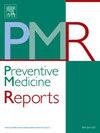美国健康成人对辣木叶粉的接受程度
IF 2.4
3区 医学
Q2 PUBLIC, ENVIRONMENTAL & OCCUPATIONAL HEALTH
引用次数: 0
摘要
目的评价辣木叶粉的可接受性,辣木叶粉是一种营养丰富的植物,主要用于临床前研究。方法于2023年在加州对不同剂量辣木叶粉进行可接受性研究。参与者被随机分配到三组中的一组。≈2.4 g[低剂量],2茶匙。≈4.8 g[中剂量],或3茶匙。≈7.2 g[高剂量]),并指示将辣木粉与食物或饮料一起服用7天。参与者接受了采访,并在基线和终点测量了他们的皮肤类胡萝卜素水平,并完成了关于消费和副作用的每日调查。研究结果包括摄入量(摄入的天数)、喜好度(感官特征评分总和)和副作用(报告的症状数量)。结果共纳入52例受试者;96%的人完成了研究。食用辣木的天数(中位数= 7,四分位数间距:7,7),皮肤类胡萝卜素水平的变化和总喜欢分数在剂量组之间没有差异(p = 0.56, p = 0.79和p = 0.27)。不同剂量组总体症状和胃肠道症状的数量不同。与低剂量组相比,高剂量组的参与者自我报告的总体(p = 0.001)和胃肠道症状(p = 0.002)更多。结论所有组服用辣木的依从性都很高,这表明在未来的辣木补充试验中,所有三种剂量都是可以接受的。当辣木剂量高于7克/天时,胃肠道症状可能更频繁地发生,但往往是轻微和短暂的。本文章由计算机程序翻译,如有差异,请以英文原文为准。
Acceptability of Moringa oleifera leaf powder among healthy adults in the United States
Objective
To assess the acceptability of moringa leaf powder, a nutrient-dense plant that has been mostly tested in pre-clinical studies.
Methods
We conducted an acceptability study of different doses of moringa leaf powder in California in 2023. Participants were randomly assigned to one of the three groups (one tsp. ≈ 2.4 g [low dose], two tsp. ≈ 4.8 g [medium dose], or three tsp. ≈ 7.2 g [high dose]) and instructed to consume the moringa powder with foods or beverages for seven days. Participants were interviewed and had their skin carotenoid levels measured at baseline and endline and completed daily surveys on consumption and side effects. The study outcomes were consumption (number of days it was consumed), liking (sum of organoleptic characteristics ratings) and side effects (number of symptoms reported).
Results
Fifty-two participants were enrolled; 96 % completed the study. The number of days that moringa was consumed (Median = 7, Interquartile range:7,7), changes in skin carotenoid levels, and total liking scores did not differ by dose group (p = 0.56, p = 0.79, and p = 0.27, respectively). The number of overall and gastrointestinal (GI) symptoms differed by dose group. Participants in the high dose group self-reported more overall (p = 0.001) and GI symptoms (p = 0.002) than those in the low dose group.
Conclusions
Compliance in consuming moringa was high for all groups, suggesting that all three doses tested may be acceptable in future moringa supplementation trials. GI symptoms may occur more frequently when the moringa doses are higher than 7 g/day, but they tend to be mild and transient.
求助全文
通过发布文献求助,成功后即可免费获取论文全文。
去求助
来源期刊

Preventive Medicine Reports
Medicine-Public Health, Environmental and Occupational Health
CiteScore
3.90
自引率
0.00%
发文量
353
 求助内容:
求助内容: 应助结果提醒方式:
应助结果提醒方式:


